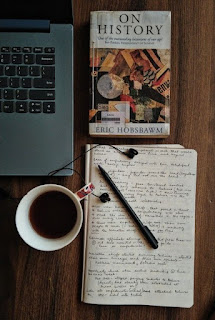Featured
- Get link
- X
- Other Apps
How to be a Better Test Taker
Multiple choice
Multiple choice is personally my favorite form of tests. I find them relatively easy, and the fact that there are possible answers to choose from helps give me a pretty good sense of what the professor is looking for.
Obviously, the first thing to do when answering a multiple choice question is to go through and eliminate the answers that you know to be wrong. Over the years, I’ve learned that the choices you’re given in multiple choice questions usually follow a certain pattern.
- One answer that is completely wrong, is usually just there to take up space
- One answer that is wrong, but you might think it’s the right one if you haven’t done the reading
- One answer that is *almost* right, but there’s a detail that’s been changed to make this the wrong answer
- The right answer
Matching/Identifying terms
This test form exists mostly so that the instructor can gauge your familiarity with vocabulary and/or key terms. There’s not much analysis to be gained from these types of tests, and they’re usually pretty easy for people who are good at memorizing things. When I study for these kinds of tests, instead of trying to learn all the vocab/terms at once, I separate them into lists. Let’s use the example of World War II. If I had, say, 30 terms to memorize, I would divide them up into the following categories: Western Stage, Eastern Stage, Homefront. I’d organize the terms so that I could memorize them *in association with* their respective category. This just makes it easier for me to picture the terms in my mind, and see how they all relate to each other. It also makes the terms seem like multiple small tasks, instead of one large one!
Free response
Most free response test questions come in two formats: those with documents and those without documents. Free response questions (FRQ) usually refers to those without documents, and document based questions (DBQ) refers to those *with* documents.
FRQs usually require a lot of brain power, often accompanied by a good deal of stress. There are no documents or answers to choose from, so it’s just you, the keyboard, and the information in your brain (no pressure). Just start writing. You’ll find that things will start popping up in your head, the things that you hadn’t remembered will begin to come back to you.
DBQs will usually come with around 7 different documents. Some will argue for a topic, some will argue against, and some will be more neutral. The key is to figure out which documents you can use to your advantage. Maybe you agree with the pro side, but all *those* documents make weak arguments. That’s a sign that you should go with the con side, and incorporate the pro documents in your rebuttal paragraph.
We could talk all day about tips and strategies for good performance in different test formats. Out of all these test tips, however, the most important one is: sleep. Make sure you’re comfortable on the day of your exam.
I wish you guys the best of luck on your tests, past, present, and future!
Stay tuned for next week, when we’ll be talking about stigma and elitism in the history major!
picture credit: https://www.pinterest.com/pin/387168899224090204/
- Get link
- X
- Other Apps
Popular Posts
7 Things to Keep in Mind When Registering for Classes
- Get link
- X
- Other Apps
Stigma and Elitism in the History Major
- Get link
- X
- Other Apps



Comments
Post a Comment